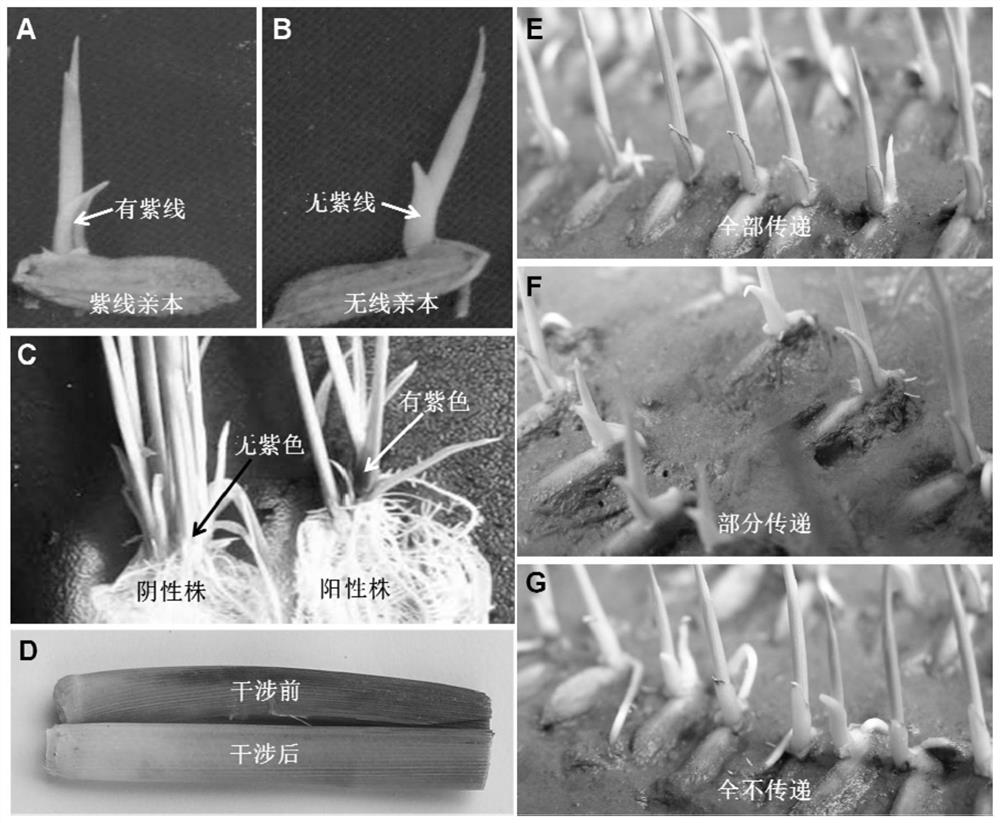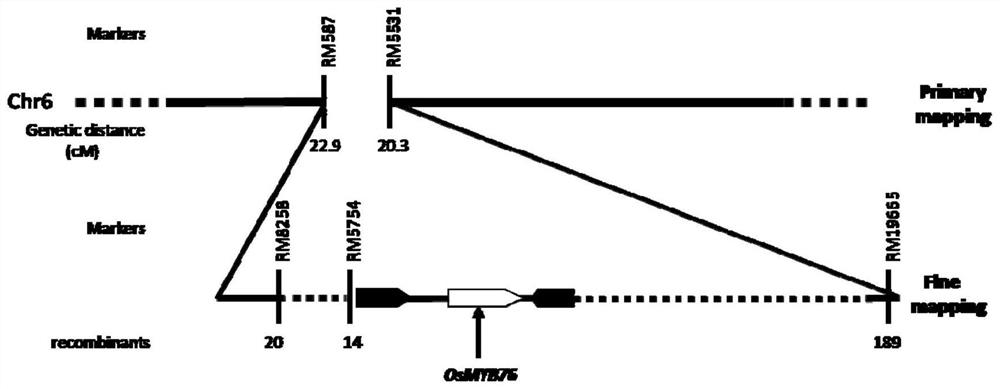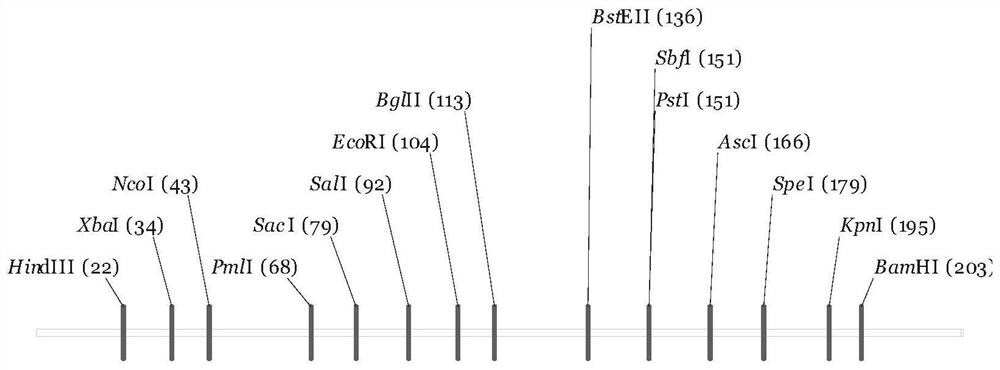Application and Realization of Rice Bleeding Purple Line Gene osmyb76
A gene and rice technology, applied in the field of genetic engineering, can solve problems such as false positives and complicated detection process, and achieve the effects of reducing false positives, accurate detection results, and obvious purple traits
- Summary
- Abstract
- Description
- Claims
- Application Information
AI Technical Summary
Problems solved by technology
Method used
Image
Examples
Embodiment 1
[0040] Obtaining and Morphological Observation of Embodiment 1, OsMYB76 Gene Mutant Plant
[0041] The OsMYB76 gene mutant is derived from the mutation of indica rice R25 (purple lines on the coleoptile, referred to as purple lines on the coleoptile). OsMYB76 mutant crossed with R25, F l Generations are all buds with purple lines, self-crossed F 2 Segregation occurred in the generation, and the ratio of purple line and no purple line was 3:1, which indicated that the phenotype of the mutant without purple line was caused by a nuclear gene mutation. Morphological observation of OsMYB76 mutant plants: the main difference between the mutant and the wild type is that there is an obvious purple line ( figure 1 , A), while the shoots of the OsMYB76 mutant had no purple lines ( figure 1 , B).
Embodiment 2
[0042] Embodiment 2, location and cloning of OsMYB76 gene
[0043] 1. Positioning groups
[0044] The OsMYB76 mutant was crossed with II-32B with purple lines, and at the same time Zhongjiu B without purple lines was crossed with wild-type R25 to obtain F 1 F 2 generation, planting F 2 Get targeting groups.
[0045] 2. Extraction of rice DNA
[0046]Parents were extracted using the improved CTAB method, including the following steps: Take 0.1-0.2 grams (about half a piece) of leaves and put them in a small mortar, add an appropriate amount of liquid nitrogen, grind them to powder immediately, put them into a 2m1 centrifuge tube, and add 700μL Put the 1.5×CTAB solution preheated at 100°C in a centrifuge tube, mix it carefully, put it in a 65°C water bath, take out the centrifuge tube after 20 minutes, add an equal volume of chloroform / isoamyl alcohol, mix vigorously, centrifuge at 13000rpm for 10 minutes, and take Put the supernatant in a new tube, add 900 μL of absolute e...
Embodiment 3
[0053] Example 3, Functional analysis of OsMYB76 gene and its application in the identification of transgenic positive offspring
[0054] In order to further confirm that the OsMYB76 gene is the gene that causes the no purple line phenotype, and to detect whether the gene can be used as a reporter gene for the detection of transgenic positive offspring, the CDS of the OsMYB76 gene and the modified OsMYB76 gene (SEQID NO.1) were respectively The GUS gene in pCAMBIA1301 was replaced by enzyme digestion and homologous recombination to obtain vectors p1 (pOsMYB76) and p2 (pOsMYB76R), and the complementary fragment of the gene OsABCG15 (Wu et al., 2014) related to rice pollen fertility and development was loaded Enter the multiple cloning sites in the p1(pOsMYB76) and p2(pOsMYB76R) vectors to obtain the vectors pX1(pOsABCG15-OsMYB76) and pX2(pOsABCG15-OsMYB76R), and transfer the vectors into related materials to investigate the purple and fertility traits. The specific operation as...
PUM
 Login to View More
Login to View More Abstract
Description
Claims
Application Information
 Login to View More
Login to View More - R&D
- Intellectual Property
- Life Sciences
- Materials
- Tech Scout
- Unparalleled Data Quality
- Higher Quality Content
- 60% Fewer Hallucinations
Browse by: Latest US Patents, China's latest patents, Technical Efficacy Thesaurus, Application Domain, Technology Topic, Popular Technical Reports.
© 2025 PatSnap. All rights reserved.Legal|Privacy policy|Modern Slavery Act Transparency Statement|Sitemap|About US| Contact US: help@patsnap.com



